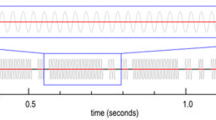Abstract
The Neotropical bumblebee Bombus (Fervidobombus) atratus Franklin is widely distributed in South America ranging from tropical and subtropical lowlands to high altitudes in the Andes. Thermal investigations of the Neotropical bumblebee Bombus atratus at rest were performed by means of thermometry. Most social insects are diurnal foragers. When they are inside their nests during the night, they carry out some tasks such as cleaning the nest, brood care or nest thermoregulation. However, forager bees generally pause at night in a sleep-like state. A bumblebee nest was transferred to a brood chamber which was maintained at approximately constant temperature (28 ± 1 °C) to prevent the workers from building the protecting involucrum so that one could mark them at birth. To provide a temperature gradient, two chambers were installed adjacent to the brood chamber, so that the workers had the chance to choose between 3 temperatures: the first one kept at 22 ± 1 °C, the second at 19 ± 1 °C and 28 ± 1 °C. The temperatures of the chambers were recorded continuously by a four channel data logger. Three categories of tasks performed by workers were registered in this investigation: warming brood (task 1), feeding brood (task 2) and foragers (task 3). During the experiment 357 workers were born and 252 (71%) of them showed sleep-like behaviour. The total sleep time in hours according to the work done by the workers was task 1 (240.6 h) > task 3 (236.0 h) > task 2 (227.3 h). The workers who performed tasks 1 and 2 preferred to sleep at the highest temperature (28 ± 1 °C) and the forager workers at 22 ± 1 °C.






Similar content being viewed by others
References
Hölldobler B, Wilson EOA. Journey to the Ants. Cambridge Massachusetts: Harvard University; 1994.
Abrahamovich AH, Díaz NB. Bumble bees of the neotropical region (Hymenoptera: Apidae). Biota Colombiana. 2002;3:199–214.
Liévano A, Ospina R, Nates-Parra G. Distribución altitudinal del género bombus en Colombia (Hymenoptera: Apidae). Invertebrados. 1991;4:541–50.
Michener CD. The bees of the world. Baltimore: Johns Hopkins University; 2000.
González VH, Mejía A, Rasmussen C. Ecology and nesting behavior of Bombus atratus Franklin in Andean highlands (Hymenoptera: Apidae). J Hymenoptera Res. 2004;13:234–42.
Almanza MT. Management of Bombus pauloensis bumblebees to pollinate Lulo (Solanum quitoense L), a native fruit from Andes of Colombia. Ecology and Development Series No 50. ZEF Bonn. 2007.
Tobler I, Neuner-Jehle M. 24-h variation of vigilance in the cockroach Blaberus giganteus. J Sleep Res. 1992;1:231–9.
Kaiser W, Steiner-Kaiser J. Neuronal correlates of sleep, wakefulness and arousal in a diurnal insect. Nature. 1983;301:707–9.
Kaiser W. Busy bees need rest, too. J Comp Physiol A. 1988;163:565–84.
Kaiser W. Sleep in insects. World Fed Sleep Res Soc Newsletter Online 8, issue. 2000. http://www.wfsrs.org/newsletters/Newsletter8_1/inside/images.html. Accessed 1 Apr 2009.
Sauer S, Kinkelin M, Herrmann E, Kaiser W. The dynamics of sleep-like behaviour in honey bees. J Comp Physiol A. 2003;189:599–607.
Schmolz E, Hoffmeister D, Lamprecht I. Calorimetric investigations on metabolic rates and thermoregulation of sleeping honeybees (Apis mellifera carnica). Thermochimica Acta. 2002;382:221–7.
da Silva-Matos EV, Garófalo CA. Observations on the development of queenless colonies of Bombus atratus (Hymenoptera, Apidae). J Apicult Res. 1995;34:177–85.
Rodd FH, Plowright RC, Owen RE. Mortality rates of adult bumble bee workers (Hymenoptera, Apidae). Can J Zool. 1980;58:1718–21.
Goldblat JW, Fell RD. Adult longevity of workers of the bumble bees Bombus fervidus (F.) and Bombus pennsylvanicus (De Geer) (Hymenoptera: Apidae). Can J Zool. 1987;65:2349–53.
Garófalo CA. Evolução do comportamento social visualizada através da ecologia de Bombus morio (Hymenoptera, Bombinae). PhD thesis, Universidade de São Paulo, Ribeirão Preto, Brasil, 1976.
Klein BA, Olzsowy KM, Klein A, Saunders KM, Seeley TD. Caste-dependent sleep of worker honey bees. J Exp Biol. 2008;211:3028–40.
Acknowledgements
The authors wish to thank Colciencias (Project 112145221228) and the Universidad de Pamplona for the economical support.
Author information
Authors and Affiliations
Corresponding author
Rights and permissions
About this article
Cite this article
Vega, L., Torres, A., Hoffmann, W. et al. Thermal investigations associated with the behaviour patterns of resting workers of Bombus atratus (Hymenoptera: Apidae). J Therm Anal Calorim 104, 233–237 (2011). https://doi.org/10.1007/s10973-011-1373-4
Published:
Issue Date:
DOI: https://doi.org/10.1007/s10973-011-1373-4




